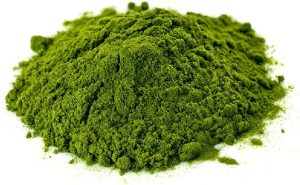
- Overview of Sodium
- Brief History of Sodium
- Functions of Sodium
- Recommended Daily Intake (RDI), Recommended Dietary Allowance (RDA), Adequate Intake (AI), or Reference Nutrient Intake (RNI) for Sodium
- Deficiency of Sodium
- Food Sources of Sodium and Where to Get It From
- Sodium and Its Interaction with Other Medications
- Websites and Articles to Delve into the Benefits of Sodium
- Disclaimer
Overview of Sodium
Sodium is a crucial mineral with essential roles in the human body. It is fundamental for maintaining fluid balance, facilitating nerve transmission, and enabling muscle contractions. As a vital electrolyte, sodium collaborates with other ions, notably potassium, to regulate water distribution and blood pressure. Its presence is integral to various physiological processes, emphasizing the significance of maintaining an adequate but balanced sodium intake.
However, excessive sodium consumption, often linked to high salt intake, poses health risks. Elevated sodium levels are associated with hypertension and cardiovascular diseases. Striking a balance in sodium intake becomes pivotal for overall health. Achieving this balance involves adopting a well-rounded diet that incorporates the appropriate ratio of essential minerals, recognizing the intricate role sodium plays in maintaining optimal bodily functions.
Brief History of Sodium
The history of sodium dates back to ancient times, with its discovery and recognition evolving over the centuries. Here’s a brief overview:
- Ancient Use:
- Sodium compounds, such as sodium carbonate (natron), were used by ancient civilizations, including the Egyptians, for various purposes like mummification and soap-making.
- Isolation by Sir Humphry Davy (1807):
- The isolation of sodium as a distinct element is credited to Sir Humphry Davy, a British chemist. In 1807, Davy electrolytically isolated sodium from sodium hydroxide (then known as caustic soda).
- Symbol and Name:
- The name “sodium” is derived from the English word “soda.” The symbol “Na” comes from the Latin word “natrium,” which referred to sodium carbonate.
- Industrial Production (19th Century):
- As industrial processes advanced in the 19th century, sodium production became more efficient. The development of the Castner-Kellner process in the early 20th century significantly contributed to large-scale sodium production.
- Sodium in Medicine:
- Sodium’s role in physiology, particularly its importance as an electrolyte, became more evident in the 20th century. Understanding its role in nerve function, muscle contractions, and fluid balance has been crucial in medical research.
- Dietary Considerations:
- In modern times, sodium’s impact on health, especially in relation to high salt diets and hypertension, has been extensively studied. Public health campaigns emphasize the importance of moderating sodium intake for cardiovascular well-being.
Certainly! Here’s the information organized in a table format:
| Period | Development and Use of Sodium |
|---|---|
| Ancient Use | Sodium compounds, such as sodium carbonate (natron), were used by ancient civilizations, including the Egyptians, for various purposes like mummification and soap-making. |
| Isolation by Sir Humphry Davy | The isolation of sodium as a distinct element is credited to Sir Humphry Davy, a British chemist. In 1807, Davy electrolytically isolated sodium from sodium hydroxide (then known as caustic soda). |
| Symbol and Name | The name “sodium” is derived from the English word “soda.” The symbol “Na” comes from the Latin word “natrium,” which referred to sodium carbonate. |
| Industrial Production (19th Century) | As industrial processes advanced in the 19th century, sodium production became more efficient. The development of the Castner-Kellner process in the early 20th century significantly contributed to large-scale sodium production. |
| Sodium in Medicine | Sodium’s role in physiology, particularly its importance as an electrolyte, became more evident in the 20th century. Understanding its role in nerve function, muscle contractions, and fluid balance has been crucial in medical research. |
| Dietary Considerations | In modern times, sodium’s impact on health, especially in relation to high salt diets and hypertension, has been extensively studied. Public health campaigns emphasize the importance of moderating sodium intake for cardiovascular well-being. |
Sodium’s history reflects its diverse uses across cultures and its evolving significance in chemistry, industry, and medicine. Today, sodium is recognized as a vital element in biological processes, playing a central role in maintaining physiological balance.
Functions of Sodium
Sodium serves several critical functions within the human body, playing a key role in various physiological processes. Here are the primary functions of sodium:
- Fluid Balance:
- Sodium is a major electrolyte that helps regulate fluid balance both inside and outside cells. It works in conjunction with other electrolytes like potassium to maintain the proper distribution of water in and around cells.
- Nerve Function:
- Sodium ions are essential for the generation and transmission of nerve impulses. The movement of sodium across nerve cell membranes is a crucial component of the electrical signaling that allows nerve cells to communicate.
- Muscle Contraction:
- Sodium is involved in the process of muscle contraction. It plays a role in the generation of action potentials, the electrical signals that stimulate muscle fibers to contract.
- Acid-Base Balance:
- Sodium helps regulate the body’s acid-base balance, working in conjunction with bicarbonate ions to maintain proper pH levels in the blood and other bodily fluids.
- Cellular Transport:
- Sodium is actively involved in various transport processes across cell membranes. It plays a role in the uptake of nutrients and other substances into cells.
- Blood Pressure Regulation:
- Sodium, along with other electrolytes, influences blood pressure by affecting the volume of blood and the tone of blood vessels. Imbalances in sodium levels can contribute to hypertension (high blood pressure).
- Kidney Function:
- The kidneys play a crucial role in maintaining sodium balance by reabsorbing or excreting sodium in response to the body’s needs. This process is vital for overall fluid and electrolyte homeostasis.
- Osmotic Pressure:
- Sodium contributes to osmotic pressure, helping to regulate the movement of water between different compartments in the body, such as between blood and tissues.
Maintaining the right balance of sodium is essential for overall health. While sodium is necessary for these functions, excessive intake, often associated with high salt consumption, can contribute to health issues such as hypertension and cardiovascular diseases. Balancing sodium intake is crucial for optimal well-being.
Recommended Daily Intake (RDI), Recommended Dietary Allowance (RDA), Adequate Intake (AI), or Reference Nutrient Intake (RNI) for Sodium
The recommended intake for sodium is often expressed as Adequate Intake (AI) rather than Recommended Dietary Allowance (RDA) because there is no specific RDA established for sodium. The AI represents the average daily intake level that is assumed to be adequate for maintaining health. It’s important to note that individual sodium needs can vary based on factors such as age, sex, health status, and physical activity levels.
The Adequate Intake (AI) for sodium is generally as follows:
- Adults (19-50 years): 1,500 milligrams (mg) per day.
- Adults (51-70 years): 1,300 mg per day.
- Adults (71 years and older): 1,200 mg per day.
These recommendations are provided by health authorities such as the National Academies of Sciences, Engineering, and Medicine in the United States. It’s important to note that excessive sodium intake is a common concern, and many individuals consume more sodium than the recommended levels. High sodium intake is associated with an increased risk of hypertension and cardiovascular diseases.
As guidelines and recommendations may evolve, it’s advisable to check with local health authorities or consult with healthcare professionals for the most up-to-date and region-specific information on sodium intake.
Deficiency of Sodium
Sodium deficiency, known as hyponatremia, is a condition characterized by low levels of sodium in the blood. This imbalance can lead to various health issues. Common causes of sodium deficiency include excessive fluid intake, certain medical conditions, medications, or inadequate dietary sodium. Symptoms and consequences of sodium deficiency may include:
- Fluid Imbalance:
- Sodium plays a crucial role in maintaining fluid balance. A deficiency can lead to an imbalance, causing excess water to move into cells, leading to cellular swelling.
- Neurological Symptoms:
- Hyponatremia can affect the central nervous system, leading to symptoms such as headache, nausea, vomiting, confusion, seizures, and in severe cases, coma.
- Muscle Cramps and Weakness:
- Sodium is involved in muscle function, and its deficiency may lead to muscle cramps, weakness, and fatigue.
- Gastrointestinal Issues:
- Symptoms may include nausea, vomiting, and diarrhea.
- Impaired Cognitive Function:
- Severe sodium deficiency can impact cognitive function, causing confusion and difficulty concentrating.
- Increased Risk of Falls:
- Sodium deficiency may contribute to a lack of coordination and an increased risk of falls, particularly in older adults.
It’s important to note that severe hyponatremia is a medical emergency and requires prompt attention. Treatment may involve addressing the underlying cause, restricting fluid intake, and in some cases, administering intravenous saline solutions.
While sodium deficiency is less common than excess sodium intake, maintaining a balanced and adequate sodium intake is crucial for overall health. If you suspect sodium deficiency or experience symptoms, seek medical attention for proper diagnosis and treatment. It’s important to consult with healthcare professionals for personalized advice based on individual health conditions and circumstances.
Food Sources of Sodium and Where to Get It From
Sodium is naturally present in many foods, and it is also commonly added to processed and restaurant foods. Here are various food sources of sodium and ideas on where to find it:
- Table Salt (Sodium Chloride):
- How to Include: Used as a seasoning for cooking and at the table. Limit added salt during cooking and consider using alternatives like herbs and spices.
- Processed Foods:
- Examples: Canned soups, processed meats (bacon, ham, sausages), canned vegetables, frozen meals, and snack foods.
- How to Include: Read food labels to be aware of sodium content, and choose lower-sodium options when available. Consider preparing fresh meals at home.
- Condiments and Sauces:
- Examples: Soy sauce, ketchup, mustard, and salad dressings.
- How to Include: Use these condiments sparingly, and choose reduced-sodium or homemade versions when possible.
- Cheese:
- Examples: Processed cheese, feta, and blue cheese.
- How to Include: Consume cheese in moderation, and choose lower-sodium varieties.
- Bread and Bakery Products:
- Examples: Some bread, rolls, and baked goods.
- How to Include: Check labels for sodium content, and choose whole-grain options with lower sodium levels.
- Pickled and Fermented Foods:
- Examples: Pickles, sauerkraut, and olives.
- How to Include: Consume these foods in moderation, and choose low-sodium or homemade varieties.
- Seafood:
- Examples: Fish and shellfish.
- How to Include: Enjoy seafood as part of a balanced diet. Fresh, grilled, or baked options may have lower sodium content compared to heavily processed seafood products.
- Vegetables:
- Examples: Some vegetables naturally contain sodium.
- How to Include: Focus on fresh or lightly processed vegetables and limit added salt during cooking.
- Dairy Products:
- Examples: Milk, yogurt, and cheese.
- How to Include: Choose low-sodium or unsalted varieties. Be aware that certain flavored or processed dairy products may contain added sodium.
- Meat and Poultry:
- Examples: Fresh meat and poultry have naturally occurring sodium.
- How to Include: Opt for fresh cuts and cook without excessive salt. Limit processed and cured meats.
It’s essential to be mindful of overall sodium intake, as excessive consumption can contribute to health issues such as hypertension. Reading food labels, choosing fresh and minimally processed foods, and preparing meals at home are effective strategies to manage sodium intake.
Sodium and Its Interaction with Other Medications
Sodium itself does not typically interact with medications in the same way that certain minerals or compounds might. However, the interactions often associated with sodium are related to the salt form of medications or specific conditions that affect sodium balance in the body. Here are a few considerations:
- Medications in Salt Form:
- Some medications are formulated as salts, such as sodium chloride or sodium bicarbonate. These medications can contribute to sodium intake. Individuals on sodium-restricted diets should be aware of the sodium content in medications.
- Diuretics (Water Pills):
- Diuretics can increase the excretion of sodium by the kidneys. It’s important to monitor sodium levels, especially in individuals taking diuretics for conditions like hypertension or heart failure.
- Lithium:
- Lithium, a medication used to treat bipolar disorder, can affect sodium levels in the body. It is crucial to monitor sodium levels regularly when taking lithium, as imbalances can occur.
- Nonsteroidal Anti-Inflammatory Drugs (NSAIDs):
- Some NSAIDs, like ibuprofen, can cause sodium retention and fluid retention. Individuals with conditions sensitive to sodium balance, such as hypertension or heart failure, should use NSAIDs cautiously.
- Angiotensin-Converting Enzyme (ACE) Inhibitors and Angiotensin II Receptor Blockers (ARBs):
- These medications, commonly prescribed for hypertension and heart conditions, may affect sodium balance. Monitoring sodium levels is important, especially in individuals with kidney issues.
It’s essential for individuals taking medications to discuss sodium-related concerns with their healthcare providers. Sodium balance is intricately linked to various physiological processes, and imbalances can have significant health implications. Monitoring sodium intake, especially for those with specific health conditions, and discussing any concerns with a healthcare professional are important steps in managing overall health.
Websites and Articles to Delve into the Benefits of Sodium
Certainly! Here’s a brief overview of sodium and some information from the provided websites:
- WebMD – Sodium:
- WebMD – Sodium provides general information about sodium, its uses, potential benefits, and safety considerations.
- MedlinePlus – Sodium:
- MedlinePlus – Sodium offers comprehensive information on sodium, including its role in the body, dietary sources, and considerations for maintaining a balanced sodium intake.
- RxList – Sodium:
- RxList – Sodium provides details on sodium supplements, their uses, and potential interactions with other substances.
- MedlinePlus – Sodium Chloride Injection:
- MedlinePlus – Sodium Chloride Injection offers information on sodium chloride injection, including its uses and potential side effects.
- Wikipedia – Saline (Medicine):
- The Wikipedia – Saline (Medicine) entry provides an overview of saline solution, commonly used in medicine, which contains sodium chloride.
- Healthline – Sodium Chloride:
- Healthline – Sodium Chloride discusses the uses of sodium chloride, commonly known as table salt, in various medical applications and its role in the body.
- SPS NHS – Considering Sodium Content of Medicines:
- SPS NHS – Considering Sodium Content of Medicines discusses the importance of considering sodium content in medicines and its impact on patients.
- Mayo Clinic – Sodium Chloride Oral Route:
- Mayo Clinic – Sodium Chloride Oral Route provides information on oral sodium chloride, including its description and proper use.
- Cleveland Clinic – Sodium Chloride Tablets:
- Cleveland Clinic – Sodium Chloride Tablets offers information on sodium chloride tablets, their uses, and precautions.
- Drugs.com – Sodium Chloride Tablets:
- Drugs.com – Sodium Chloride Tablets provides details on sodium chloride tablets, including dosage, side effects, and precautions.
- UCL – Highlighting Health Issues in High Sodium Medicines:
- UCL – Highlighting Health Issues in High Sodium Medicines discusses the impact of high sodium content in medicines on health.
- Columbia Doctors – Sodium Chloride Oral Tablet:
- Columbia Doctors – Sodium Chloride Oral Tablet provides information on sodium chloride oral tablets, their uses, and potential side effects.
- Medical News Today – Salt Tablets:
- Medical News Today – Salt Tablets discusses the use of salt tablets, which may contain sodium, and their potential benefits.
Disclaimer
The information is solely provided for educational purposes. It is not intended to diagnose, treat, cure, or prevent any disease. Seek the advice of your physician or qualified healthcare provider with any questions you may have regarding a medical condition at all times. Never disregard professional medical advice because of something you have read or learned from this article.






